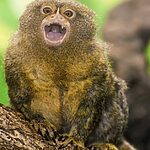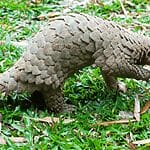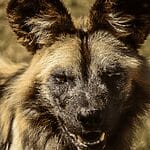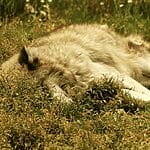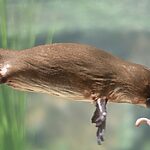Ever seen an animal in your backyard and wondered if it’s a squirrel or something else entirely? The resemblance can be confusing, especially with other small, furry creatures that share similar traits. From certain species of rodents to distant cousins in the animal kingdom, these lookalikes can leave you guessing.
One common mix-up happens with chipmunks. Despite their striking similarity to squirrels, they have distinct features that set them apart. In fact, many species worldwide mimic the squirrel’s appearance for survival.
In this article, we’ll dive into animals that often get mistaken for squirrels, breaking down what makes each unique. You’ll gain a better understanding of what to look for, so next time you spot one, you won’t second guess yourself.
Ready to clear up the confusion? Let’s jump right in.
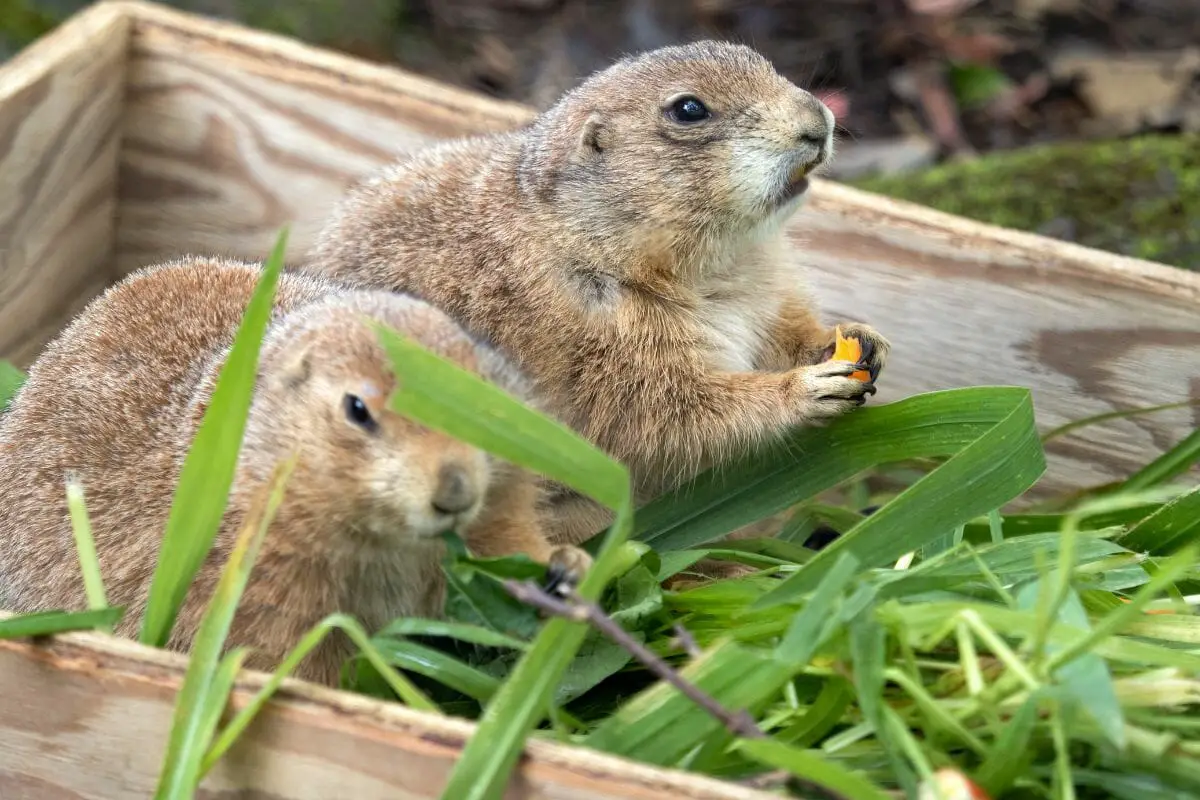
1. Prairie Dogs
Prairie dogs are incredibly similar to squirrels, however, there are some types that look more similar to their relatives. While squirrels can be found around the world, prairie dogs are more commonly found in North and Central America.
However, they aren’t so similar when it comes to size, and not all prairie dogs are part of the Sciuridae family.
Black-Tailed Prairie Dogs
One of the most similar looking prairie dogs to squirrels is the black-tailed prairie dog. Both of them are small, and they each have long tails.
However, you’ll find that one of the key differences here is that the black-tailed prairie dog prefers to live underground compared to the squirrels in their trees.
Utah Prairie Dog
These prairie dogs have been mistaken for squirrels in the past, and have been known to be small and have bushy tales. These little critters love to burrow away into holes, and are social creatures, however, their tails are not quite as bushy as squirrels.
Gunnison’s Prairie Dog
These prairie dogs are a little bit larger than squirrels, but they both have bushy tails and long hind legs. Like squirrels, their front legs are shorter.
Unlike squirrels however, these prairie dogs are herbivores who prefer to build underground burrows for shelter. Meanwhile, squirrels will scavenge for different types of food and prefer to stay in trees.
2. Marmots
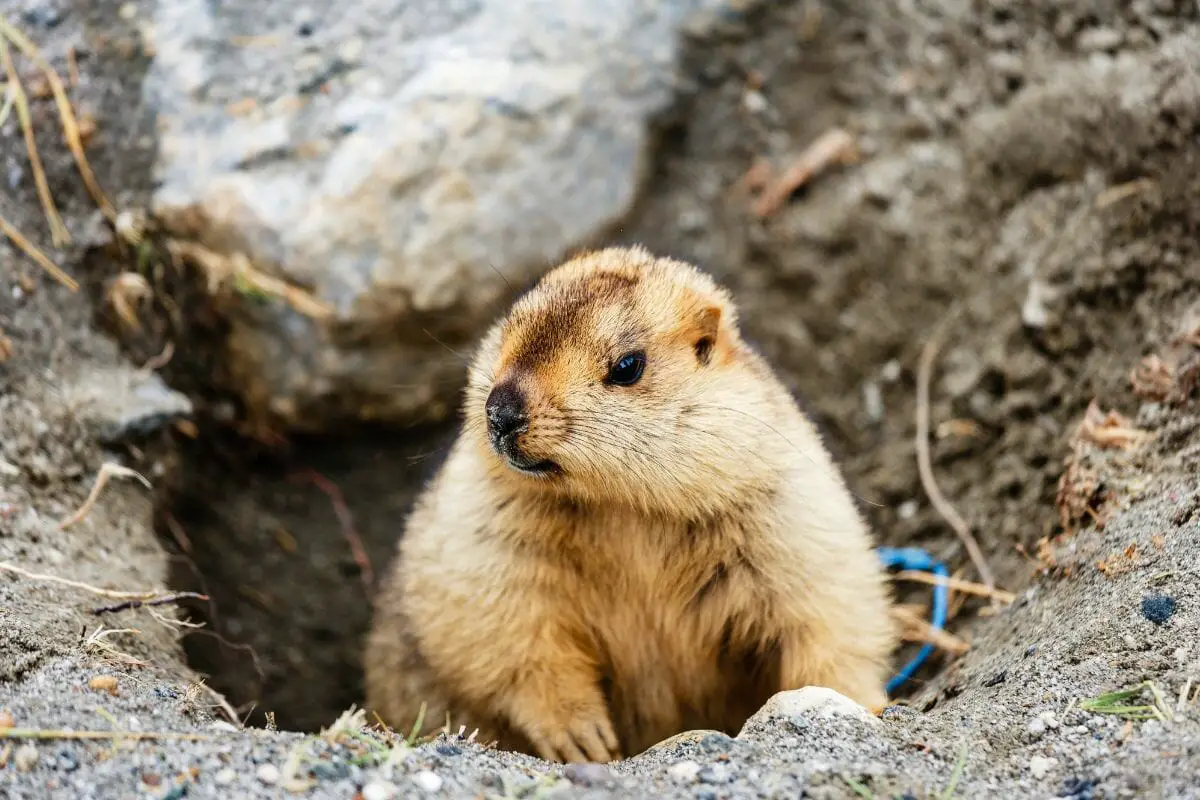
Much like the prairie dog, marmots are closely related to squirrels as members of the Sciurdidae family. Occasionally, marmots are either called groundhogs or woodchucks, and they are widely considered to be larger squirrels.
They like to make underground burrows like prairie dogs and chipmunks, and all of these creatures are considered ground squirrels.
Hoary Marmot
These are the largest members of the squirrel family, growing up to two feet long and weighing up to a maximum of eight pounds. You can find hoary marmots in North America, and you may also find them in some areas in Russia.
Alaska Marmot
Found in the northern regions of North America, the Alaska marmot is prepared for cold weather. They have furry coats, bushy tails, and their hind legs are longer than their front legs.
Like squirrels, they can climb trees, but unlike their smaller cousins, the Alaska marmot is considerably bigger.
Vancouver Marmot
As one of the largest members of the squirrel family following the Hoary marmot, the Vancouver marmot weighs up to 24 lbs. You’ll be able to find these marmots around Vancouver in Canada.
They share many things in common with squirrels, including their small size, furry disposition, and a long tail, however their tail isn’t as bushy as the squirrel.
3. Chipmunks
While the marmot and prairie dog are more similar to larger squirrels, chipmunks are a smaller variant. Compared to squirrels, chipmunks have a smaller body, and have distinct stripes to tell them apart.
However, they have a shorter tail than the average squirrel, and while they do have a bushy tail, the squirrel’s is longer.
Alpine Chipmunk
It’s easy to get confused between alpine chipmunks and squirrels, however, alpine chipmunks are known to inhabit the Sierra Nevada mountains in North America.
They have bushy tails, long hind legs, and sharp claws, with all of these helping to climb trees and build their nests.
California Chipmunk
These chipmunks have white stripes, and they are both small and brown. You can easily find them in the western parts of North America. They are most commonly found in both Mexico and southern parts of California.
These chipmunks look incredibly similar to squirrels, but if you see their white stripes, they should be easily recognizable.
Colorado Chipmunk
Found in the mountains of Colorado is the Colorado chipmunk. Named for where they’re most commonly found, you can also find these critters in Arizona, Utah, and New Mexico.
Unlike squirrels, they have white stripes running down their backs, and less bushy tails. However, they are a similar size, and their tails are just as long.
Cliff Chipmunk
If you live in rural parts of North America, you’ll have most likely seen a cliff chipmunk running around. These chipmunks are almost identical to squirrels, and are constantly on the hunt for seeds and nuts.
Like squirrels, they are brown and have bushy tails, however, they aren’t as easily found in urban areas as squirrels.
Gray-Collared Chipmunk
Despite being a close relative of the squirrel, these chipmunks don’t have as bushy tails, but they make up for that in how fluffy they are. You can find gray-collared chipmunks in wooded regions of eastern Arizona.
Despite being called gray-collared, they have brown fur with a reddish tint, with white stripes running down their backs.
Hopi Chipmunk
The hopi chipmunk is another variant found in Arizona, Colorado, and Utah. They look similar to squirrels, but have striped fur. However, they also have a long tail that is not as bushy.
When they need to store food away, they will store it in their large cheeks.
Gray-Footed Chipmunk
Located in New Mexico and the Sierra Diablo regions of North America, the gray-footed chipmunk looks noticeably similar to the squirrel.
They are similar sizes, shapes, and colors, but unlike the squirrel, the gray-footed chipmunk is known for having stripes on the backs of their bodies.
Least Chipmunk
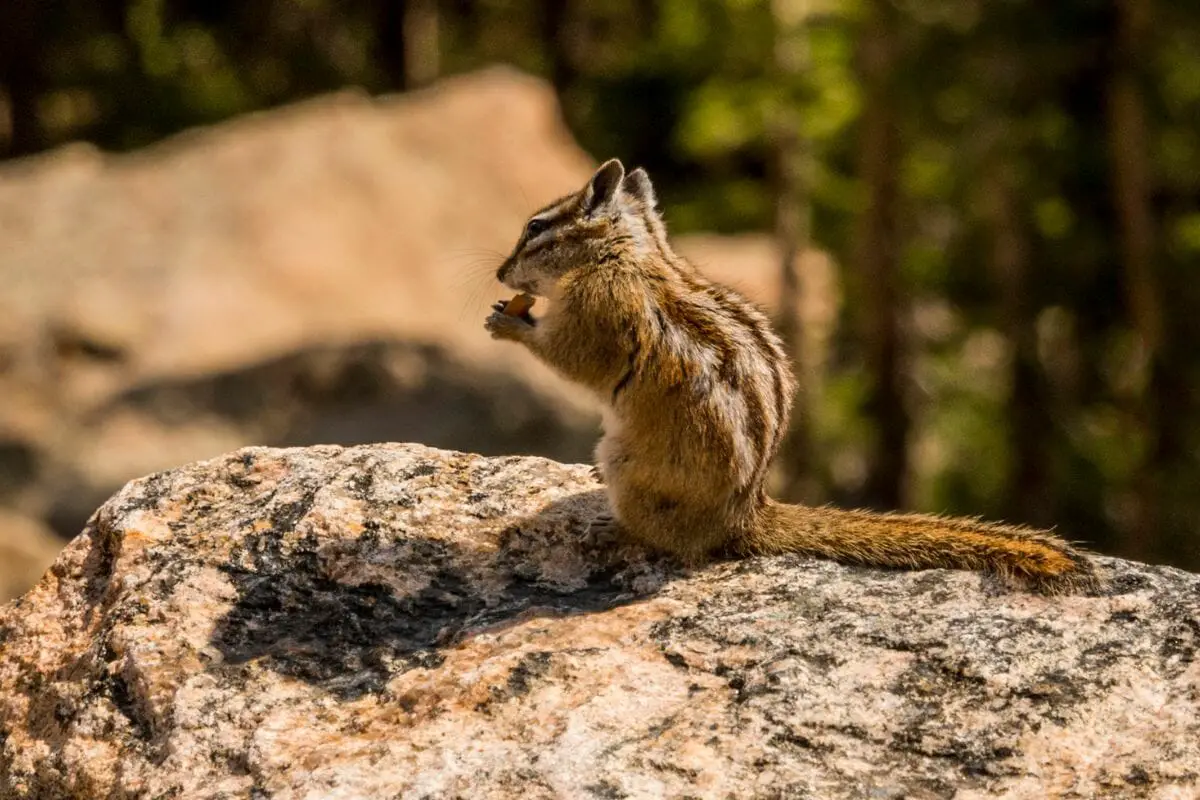
Found around North America, the least chipmunk has brown fur with a reddish tint and white stripes that run down its back. Much like the squirrel, they are small and have bushy tails.
It’s easy to mistake them for one another when you’re at a distance due to their similarities.
Lodgepole Chipmunk
You can find the lodgepole chipmunk in the western regions of North America, and they’re known for being incredibly similar to their squirrel cousins.
They are roughly the same size, have similar coloring, and even share a number of habits such as tree climbing. Lodgepole chipmunks will build nests in trees, and they’ll also burrow for seeds and nuts.
However, unlike the squirrel, they don’t have as bushy a tail.
Long-Eared Chipmunk
While it may have a long tail, the long-eared chipmunk doesn’t have as bushy a tail. It doesn’t have as much fur on its body, but the fur it does have is brown, and there are some white stripes. Its main trademark is its furry ears.
Despite being closely related to the squirrel, you’re more likely to find it on the ground than in the trees, as it is not as good at climbing.
Merriam’s Chipmunk
Found in the southern and central parts of California, this chipmunk is similar to squirrels due to being small and having distinct tails.
Despite having similar colors, with both having brown fur, they also have distinct stripes, and their tails are not as bushy.
Palmer’s Chipmunk
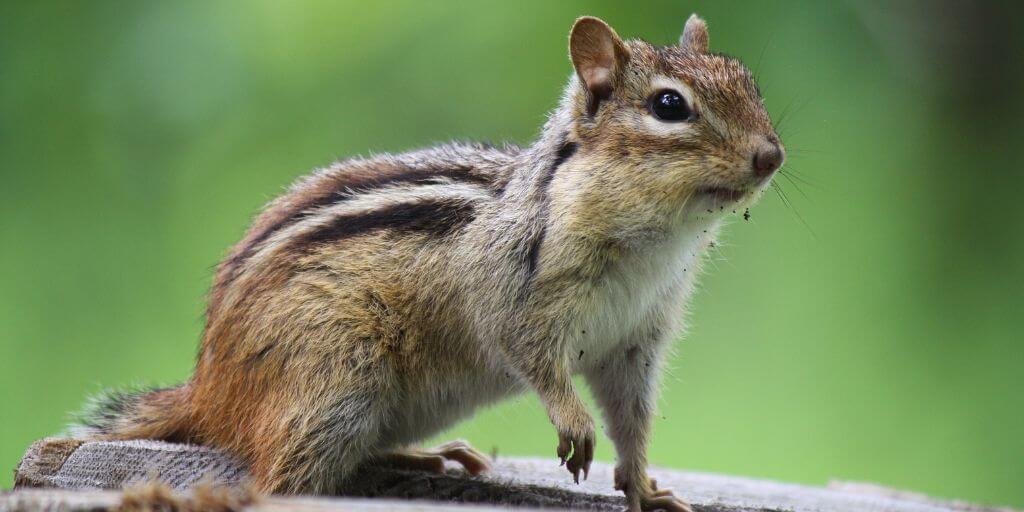
These chipmunks have brown fur and white stripes down its back. Palmer’s chipmunk is commonly found in the southern parts of Nevada. Like squirrels, they are omnivores and distinct climbers, with a long tail that helps them to balance.
They will build their nests in trees, and aren’t as likely to stay on the ground.
Red-Tailed Chipmunk
It’s easy to mistake a red-tailed chipmunk for a squirrel. If you’re in Alberta or British Columbia, you may have spotted these little mammals and mistaken them for squirrels.
Both red-tailed chipmunks and squirrels have long, bushy tails, of which the red-tailed chipmunk is named.
Siskiyou Chipmunk
If you’ve been hiking on the Oregon and Californian mountain trails, you may have spotted these small mammals and thought they were squirrels.
Despite lacking the squirrel’s trademark bushy tail, the siskiyou chipmunk has a similar size and coloration to its squirrel cousin. They even share similar loves for seeds and nuts, of which they are happy to forage for.
Sonoma Chipmunk
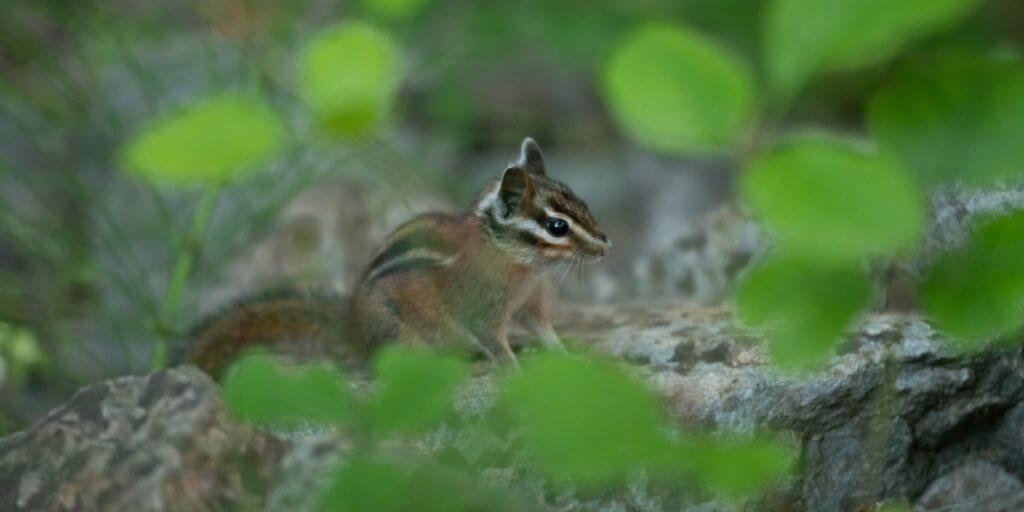
Found in the western region of the United States, the Sonoma chipmunk shares many similarities to squirrels, but have distinct colorations. They are brown and white, and in some cases, they are much smaller.
Like the squirrel, they’ll use their long tail for balance, but unlike the squirrel, these tails are not as bushy.
Uinta Chipmunk
Smaller than a squirrel, the Uinta chipmunk has a long tail which isn’t as bushy as its squirrel cousin.
If you look closely, they have a similar coloration, with a brown coat with a red tint, but they also have the white stripes that are the trademark of chipmunks.
Nutria
Nutria, sometimes called coypu, are large rodents native to South America. They have stout bodies with coarse, brown fur and lighter-colored bellies. Nutria have a long, hairless tail and large orange teeth, giving them a unique appearance.
These semi-aquatic rodents are strong swimmers, aided by their webbed feet. Often found in wetland areas, they are known for their destructive feeding and burrowing habits.
Introduced to many regions for fur farming, nutria have become invasive pests in several countries, causing damage to ecosystems by disturbing native plant and animal life.
Gundi
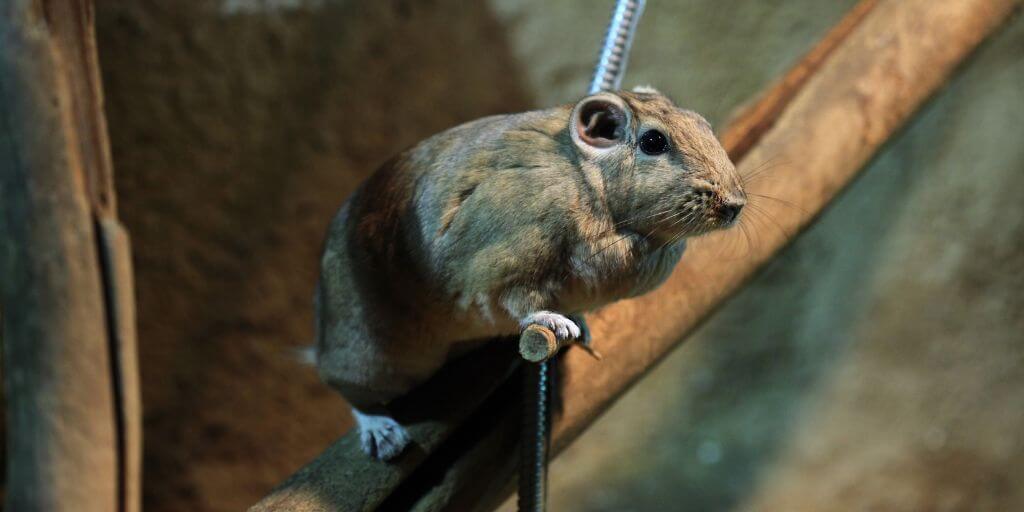
Gundis are small rodents that inhabit the rocky deserts of North Africa. With compact bodies and bushy tails, they look remarkably similar to squirrels.
However, gundis live among rocks rather than digging burrows, taking advantage of natural shelters in their harsh environments. They have soft fur in shades of gray and brown, blending into their surroundings.
Gundis feed primarily on plant material such as leaves and seeds. These rodents are social animals, living in colonies, which further distinguishes them from the solitary behavior of many squirrel species.
Bushy-Tailed Woodrat
The bushy-tailed woodrat, often referred to as a packrat, is found throughout North America. Its large ears and bushy tail, which resembles a squirrel’s, make it easily identifiable.
This rodent has brown fur with black peppering and a white underside. Woodrats are known for their habit of collecting shiny objects and building intricate nests, called middens, out of plant material.
Unlike squirrels, they do not hibernate but instead gather food to store for winter. Their bushy tails and climbing abilities give them a superficial resemblance to tree-dwelling squirrels.
Gopher
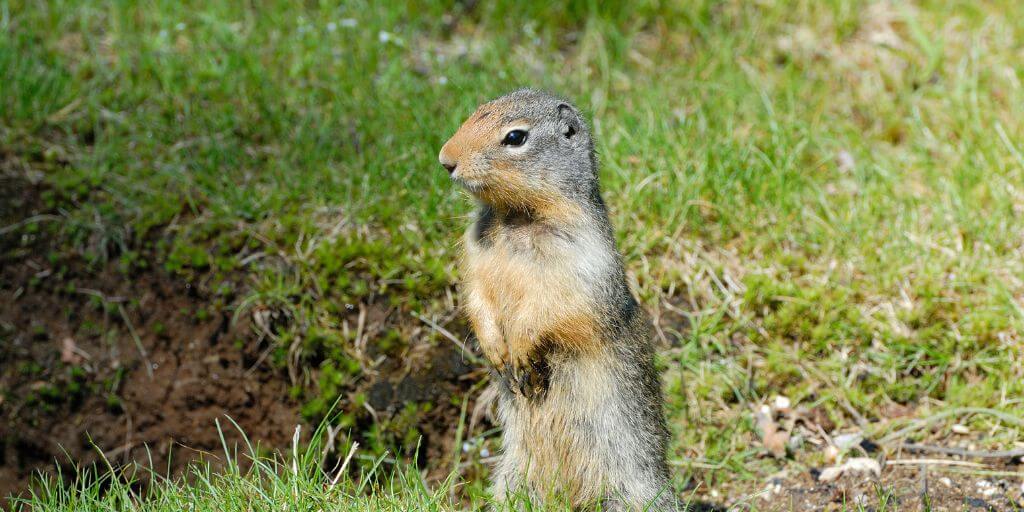
Gophers are burrowing rodents known for their underground tunnel systems. Their fur often matches the color of the soil they inhabit, allowing them to blend in. Unlike squirrels, gophers have small eyes, and short tails, and spend most of their lives underground.
They use their large cheek pouches to carry food while feeding primarily on plant roots. Gophers are agricultural pests, as their burrowing damages crops and affects soil structure.
While they share some habits with ground squirrels, their subterranean lifestyle and physical traits set them apart from tree-dwelling species.
Hutia
Hutias are medium-sized rodents native to the Caribbean islands. They resemble squirrels with their robust bodies and bushy tails. Their coarse fur can range in color from brown to gray, allowing them to blend into their surroundings.
Hutias thrive in various habitats, including forests and rocky areas. As social creatures, they primarily eat leaves, fruits, and bark. Although these animals can climb trees like squirrels, they often prefer to forage on the ground.
Their agile movements and foraging behavior highlight their squirrel-like appearance, even though they belong to a different rodent family.
Dormouse
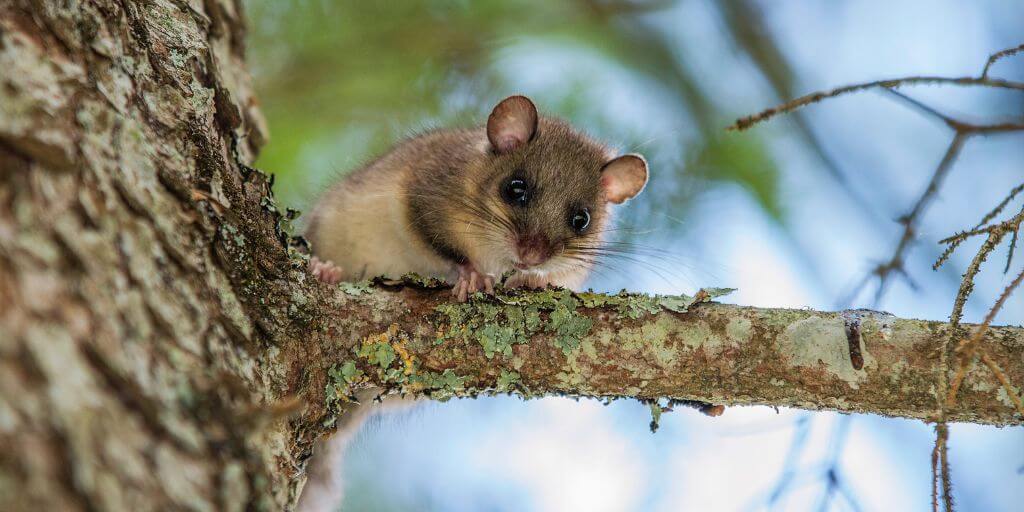
Dormice are small rodents found across Europe, Africa, and Asia, known for their close resemblance to squirrels. They have soft, dense fur and bushy tails that assist them in maintaining balance as they navigate through trees.
Dormice are nocturnal, featuring large eyes that help them see in low-light conditions. Their diet mainly consists of fruits, nuts, and insects.
These fascinating animals are recognized for their extended hibernation periods, lasting up to six months. Although dormice share a similar lifestyle and appearance with squirrels, they are smaller and belong to a distinct family of rodents.
Chinchilla
Chinchillas are small rodents that originate from the Andes mountains in South America. They resemble squirrels with their compact bodies and fluffy tails. Known for their exceptionally soft and dense fur, chinchillas are well-adapted to cold mountainous environments.
Their agility and jumping ability enable them to navigate rocky terrains easily. Chinchillas primarily feed on grasses and seeds, displaying a playful nature that makes them popular as exotic pets.
While they share a squirrel-like appearance, chinchillas possess unique adaptations that suit their high-altitude habitats.
FAQs
Which animal looks like a squirrel?
Prairie dogs closely resemble squirrels due to their size, bushy tails, and similar behaviors. However, prairie dogs typically inhabit underground burrows, unlike squirrels, which prefer trees. Their resemblance can sometimes lead to confusion when seen in the wild.
What looks like a squirrel but is not?
Chipmunks look similar to squirrels but are smaller and have distinct stripes on their backs. They have bushy tails, but not as long or thick as those of squirrels. Chipmunks also prefer ground habitats and are often mistaken for their larger cousins.
What are the main differences between squirrels and chipmunks?
Squirrels are larger with longer, bushier tails and no stripes. Chipmunks are smaller, have stripes on their backs, and shorter tails. Squirrels are more tree-dwelling, while chipmunks often forage on the ground and create underground burrows.
Do prairie dogs live in trees like squirrels?
No, prairie dogs do not live in trees. They create complex underground burrow systems for shelter and protection. This is a significant difference from squirrels, which typically build nests in trees.
Final Thoughts
Understanding the differences between animals that look like squirrels can enhance your appreciation of wildlife and improve your observational skills in nature. While prairie dogs, marmots, and chipmunks share some physical traits with squirrels, each has unique characteristics and behaviors.
Prairie dogs prefer underground burrows, marmots are larger and more robust, and chipmunks have distinctive stripes and shorter tails. Recognizing these differences not only satisfies curiosity but also aids in understanding their roles within their respective ecosystems. Next time you encounter these creatures, you’ll be better equipped to identify and appreciate the diversity in the animal kingdom.
- What Should I Do If A Koala Bites Me? Safety Guide - 2024-05-30
- Are Kangaroos Born Without Hind Legs? A Fascinating Journey - 2024-05-30
- Animals That Look Like Squirrels - 2024-05-30


